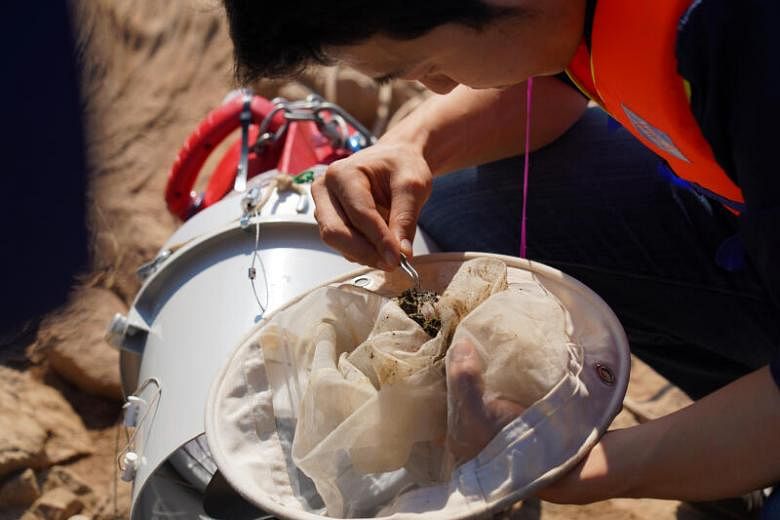BANGKOK - Municipal trash dumped at an open landfill in Thailand risks filling a nearby tributary of the Mekong river with plastic waste whenever it is rainy or windy.
Along India's Ganges river, small sachets that used to wrap chewing tobacco are abundant, but are difficult to collect and dispose.
A United Nations study tracing the origins of plastic pollution has identified key leakage hotspots in Asia. Plugging these gaps require not just broad-based bans on certain plastic products, but also policies that target sources of plastic pollution specific to each region, say researchers.
"Our plastic leakage hotspot looks quite different from the globally commonly known ones," Ms Kakuko Nagatani-Yoshida, United Nations Environment Programe (UNEP) regional coordinator for chemicals, waste and air quality said on Thursday (May 28). She leads the Japan-funded study titled Promotion of Countermeasures Against Marine Plastic Litter in South East Asia and India.
Apart from items from daily use, the plastic waste found were those associated with agriculture, fishery, construction and shipping, she noted. "The plastic pollution is very site-specific and requires localised solutions."
Using geographic information systems, physical surveys, waste audits, as well as the results from a microplastic surveying machine, researchers mapped plastic waste leakage hot spots across nine sites in Cambodia, Laos, Thailand, Vietnam and India. Local communities also contributed by using a mobile application to identify littering spots and illegal dumping sites.
The UN study found that some top plastic leakage hot spots are illegal dump sites, including one along Thailand's Mun river which feeds into the Mekong. Slums or smaller cities near waterways, with poor waste collection systems, pose another risk. Plastic waste from upstream also tends to accumulate in ports and piers.
Given the different composition of plastic waste found in each of the locations studied, the researchers recommended policies and campaigns that targeted specific sources of plastic waste for different areas.
In Mumbai, for example, plastic bottle caps made up half of the plastic trash found. In Agra, near the Taj Mahal, polythene bags made up 62 per cent. In Vientiane, where plastic drink bottles made up 56 per cent of the plastic trash, fishing nets and raincoats made of high density polyethylene were also a concern.
Microplastics were also abundant in the Mekong and Ganges rivers, with all but three of 39 samples of water contaminated. The tiny substances come from a variety of products, including exfoliants in beauty creams. Water from downstream locations like the Vietnamese city of Can Tho contained significantly more microplastics.
Yet the source of some 80 per cent of the microplastics could not be determined. Researchers said there was a need to build up a database of products from which microplastic trash originated.
They said governments also needed to improve waste management in medium and smaller cities, as well as expand waste collection coverage in areas near rivers and drains.
Researchers say the second phase of this UN project would be a wider study involving more locations to examine the impact of plastic pollution on fishery activity and wildlife, particularly migratory species.
"We will be focusing more and more on how we will use this information and science to drive policy change and behaviour change," said Ms Nagatani-Yoshida.


